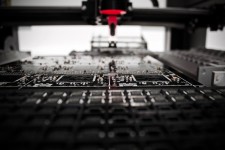How Evocon Calculates Overall Equipment Effectiveness or OEE

TALLINN, Estonia, February 18, 2020 (Newswire.com) - The Overall Equipment Effectiveness, or OEE, is a measurement made from the most essential data from the manufacturing process. This metric is crucial in manufacturing, as it calculates the state of production lines and is incredibly helpful when it comes to achieving improvements and understanding losses.
Evocon is an expert on just that: software manufacturing technology and creating the tools to understand and effectively use machine data. It's a trusted name in 44 countries, spanning 12 different industries with an interdisciplinary team with diverse backgrounds, combining decades of knowledge in production and software tech in clients' service.
Combining different variables to create a tool that helps all people involved gain a broader perspective. OEE is both a metric to a process and a complex tool that advances productivity.
The calculation of OEE aims to consider all the different losses in production, but it essentially comes down to three parts:
● Quality: refers to how much of the finished product is up to standard and ready to be placed in the consumers' hands.
● Performance: considers anything that causes the process to slow down to less than maximum speed.
● Availability: counts events that caused production to be stopped for varying periods of time.
The tracking of three factors into one metric, the OEE, gives insight on how successfully the manufacturing process is.
It is a clear guideline on where to address issues and which parts need maintenance or assistance.
In an increasingly digitalized world, the manufacturing industry has come upon the challenge to create software that responds to the need for smarter OEE data turnout.
How does OEE help boost companies?
Better allocations of resources, since employees can focus on solving problems instead of finding them. Having OEE data digitally available gives the people that need it the information in real-time, and in turn, they can direct their teams to find solutions faster.
Making data collection easier has a real impact on a company’s market value, investors' confidence and corporate moral.
OEE data is increasingly important as the manufacturing industry becomes more automated. For example, technologies like machine learning are improved by having OEE data fed into it, and software that can make this immediate would have a real impact on business.
Further integration of new technology will force OEE to be calculated with intelligent software, readily available, easy to understand and integrated into other existing systems.
Real-time tracking helps with easier identification of a problem, cut time in the presentation of results and provides a teachable tool for all professionals.
So even as the manufacturing world moves into new uncharted areas, the necessity of the traditional OEE metric increases.
Now armed with its own technologically advancements and able to seamlessly become part of the manufacturing process, there will be no future in manufacturing where the OEE metric is not a fundamental part; it will advance alongside other technology, feeding and improving the reach of manufacturing productivity.
Source: Evocon